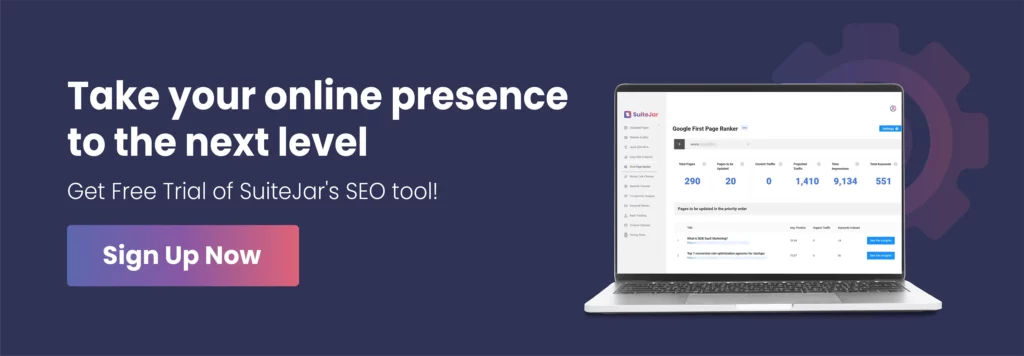Only $99 for a full year!
No credit card required
Rank on Google's first page in 3 months
Understanding SEO Forecasting in 2025
Nov 14, 2024 | user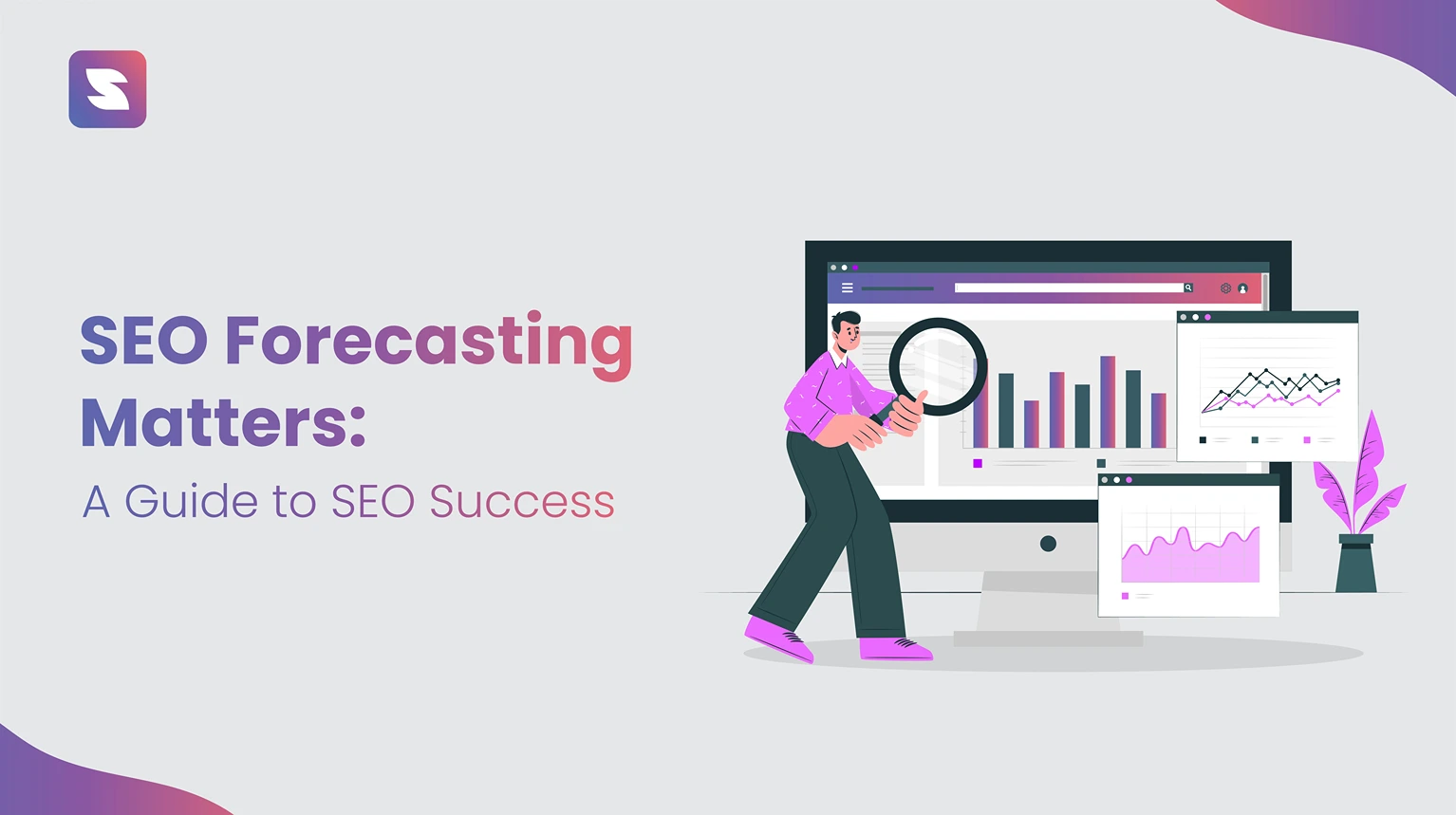
Are you looking to gain insights into the website’s future performance and drive more traffic? Here comes SEO forecasting.
SEO forecasting is the practice of using data-driven analysis to predict future search engine rankings of a website. It’s all about using data and insights to predict where your website might rank in search engine results in the future.
It’s not just about guesses; it’s about making smart, informed decisions based on solid data. This way, businesses and marketers can determine the best ways to use their resources for the most significant impact.
In this blog post, we will provide you with a complete guide to SEO forecasting. Also, you will learn about the critical metrics to consider and the top three SEO forecasting tools.
What is SEO Forecasting?
SEO forecasting estimates future SEO results from a company’s search engine optimization efforts using metrics like traffic, keyword data, click-through rate, and conversion rates.
Think of it as trying to predict what will happen with your website’s ranking on search engines, how much traffic you’ll get, and how valuable all your SEO efforts are.
This strategy is super important in 2025 because search engines and people’s searches constantly change. So, staying in the loop with these trends is crucial. By getting a sneak peek at possible future scenarios, you can craft SEO strategies that are not just on point for today but also ready for whatever comes next.
This may involve improving your content, reconsidering your targeted keywords, or implementing significant technical changes on your website.
Why is SEO Forecasting important in 2025?
Companies are constantly vying for the top spot in search engine results, and that’s where SEO forecasting becomes crucial. It’s a strategic process that helps companies to manage their online presence more effectively.
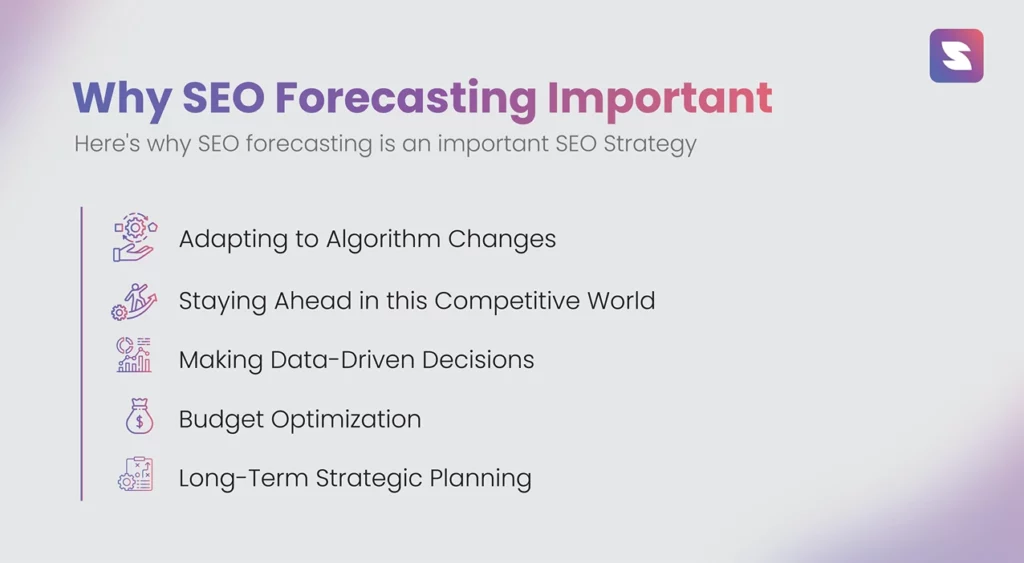
1. Adapting to Algorithm Changes: Search engines, notably Google, constantly update website rank. SEO forecasting equips businesses with insights to adapt these changes in algorithms. And that helps to ensure that it remains relevant and visible.
2. Staying Ahead in this Competitive World: The online world is increasingly competitive. By identifying emerging trends and unexplored niches through SEO forecasting, businesses can gain a competitive edge and stay ahead.
3. Making Data-Driven Decisions: SEO forecasting provides crucial insights, guiding businesses in content strategy, keyword targeting, and resource allocation.
4. Budget Optimization: Effective budget allocation is critical to any marketing strategy. SEO forecasting helps businesses identify the most impactful SEO tactics. It ensures investments are made in areas with the highest return potential.
5. Long-Term Strategic Planning: Developing a long-term SEO strategy benefits your business growth and success. SEO forecasting aids in setting realistic goals and crafting strategies to achieve them over time.
Metrics To Consider for SEO Forecasting
Discussing SEO forecasting is like piecing together a set of metrics puzzles. Each metric provides valuable insights that, when combined, can paint a clear picture of your future SEO performance.
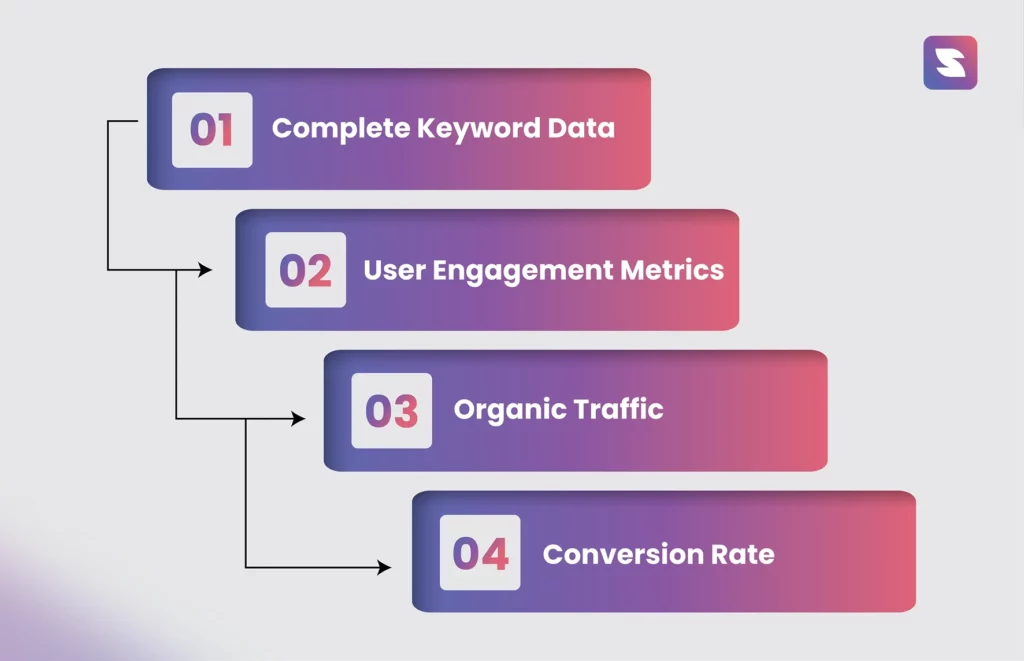
Let’s walk through some key metrics and understand how to analyze and integrate them for effective forecasting.
1. Complete Keyword Data
i. Keyword Trends
This metric tracks the popularity of search queries over time. Keeping up with emerging keyword trends can position your content to capture new traffic sources.
Use tools like Google Trends to spot types of keywords. Incorporating these into your strategy can help you stay ahead of the curve.
ii. Understand Keyword Volume and Data
Begin by identifying all targeted keywords for your website. This includes keywords you are currently ranking for and those you aspire to rank for in the future. Tools like Suitejar or Ahrefs can provide valuable insights into search volumes and current ranking details of these keywords.
iii. Identify All Ranking Keywords
Using a keyword research tool can help you quickly identify the keywords your site currently ranks for. It provides a complete picture of your current SEO standing.
iv. Expand Your Keyword List
Add potential target keywords to your list, considering the forecasted period. SEO forecasting isn’t just about current rankings; it’s also about future aspirations. Obtain search volume and ranking data for these additional keywords to enrich your forecasting model.
v. Estimate Traffic Based on Average CTR
Use the formula (Estimated Monthly Traffic = Total Keyword Search Volume * Average CTR) to estimate potential traffic. Recognize that CTR can vary significantly based on industry, keyword intent, and SERP features (like featured snippets, local packs, etc.).
Search volume measures how often a particular keyword is searched in a given timeframe. High search volume indicates a strong interest in a topic or keyword, signaling potential traffic opportunities. Look for patterns or shifts in search volume over time.
2. User Engagement Metrics
These include metrics like page views, time spent on site, bounce rate, and interactions. High engagement rates often correlate with better search rankings, indicating content quality and relevance. You can thoroughly check your analytics to track these metrics.
Pages with low engagement might need content improvement or better UX design. User engagement metrics are critical in understanding how visitors interact with your website. Evaluating these metrics provides insights into the user experience and content relevance.
i. Page Views
Indicates the number of times a page is viewed. Higher page views suggest content relevance and interest. Look for patterns in page views. Are specific topics or types of content consistently attracting more views?
ii. Time Spent on Site
Reflects how long users stay on your website. Longer durations can imply engaging, valuable content. Compare the time spent across different pages. Identify what keeps users engaged longer and replicate these elements in other content.
iii. Bounce Rate
You can measure the percentage of visitors who leave after viewing only one page. A high bounce rate might indicate the content isn’t meeting users’ expectations. Enhance the quality of the content, improve page load speed, and ensure your landing pages accurately match the search intent.
iv. Interactions Per Visit
Track actions like comments, shares, and clicks on internal links. These interactions show a deeper level of engagement. Include clear calls-to-action, interactive elements, and engaging content formats to boost interactions.
For example, a sudden drop in search volume for a previously popular keyword could signal a shift in user interest. Use historical data trends to predict future movements. If certain keywords have shown seasonal popularity, you can expect similar trends to recur and plan your content strategy accordingly.
If your analysis indicates shifts in user behavior or backlink quality, be ready to tweak your SEO strategy to stay on top.
3. Organic Traffic
Organic traffic is called the number of visitors coming to your website coming through search engine results, excluding paid ads. If you have a high organic traffic, that means you have an effective SEO. Your website is performing well in SERPs and generating clicks.
Here, organic traffic involves analyzing trends in your current traffic, the potential of targeted keywords, and the expected impact of SEO.
You can SEO forecast the keyword ranking by going through these steps
- Collect data like organic traffic, keyword rankings, and other relevant data within a significant period.
- Identify factors like seasonality, market trends, and other algorithm updates.
- Use SEO forecasting tools that help you in your project to know the future traffic trends based on your historical data and identify factors.
4. Conversion Rate
The conversion rate measures your website’s effectiveness in turning visitors into customers or leads. Conversion rates also matter with how many visitors are taking desired actions on your site. It will include purchasing, submitting a contact form, or subscribing to a newsletter.
In SEO forecasting, predicting how traffic quality and quantity changes will impact conversions is crucial. This will include factors like the intent behind the keywords you are targeting and the user experience on your site. And the alignment between your content and what your audience is seeking.
You can SEO forecast the keyword ranking by going through these steps
- Gather historical conversion rate data and related metrics like CTC and bounce rates.
- You can look for patterns in how changes in traffic and user experience have impacted conversions.
- Use statistical models or SEO tools like SuiteJar to forecast future conversion rates based on your findings.
These metrics are related to one another for getting complete data about your website SEO forecasting. Effective SEO forecasting involves a good approach and considering how changes in one area will impact the others. Use affordable SEO tools that help you provide valuable data for analyzing these metrics.
Understanding and analyzing these metrics is like having a roadmap for your SEO journey in 2024. By closely monitoring and interpreting these indicators wisely, you can navigate the SEO more effectively and make informed decisions for your future strategies.
Best SEO Forecasting Tools
Predicting website ranking impact is a big challenge for SEO professionals. This is where SEO forecasting tools come into play.
These tools use various data and algorithms to forecast the potential outcomes of SEO strategies. And it helps your businesses to make informed decisions and prioritize their efforts.
Below are the three efficient SEO forecasting tools:
1. SuiteJar
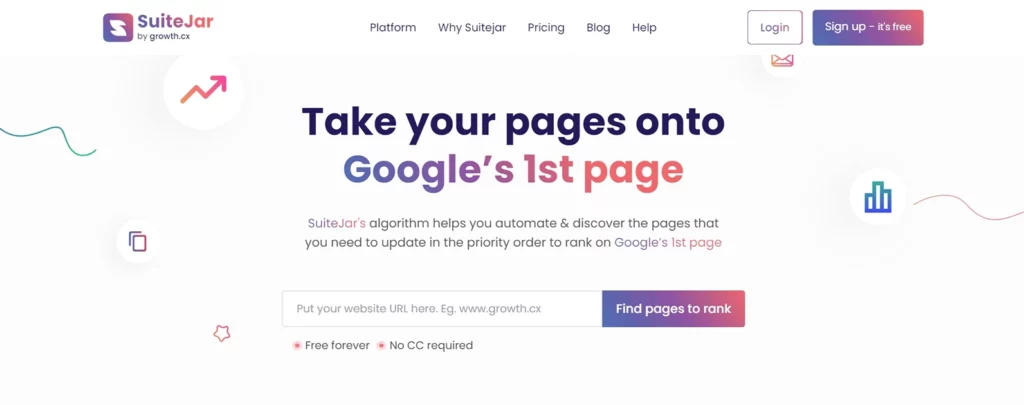
SuiteJar is the best SEO tool that helps you with your website SEO forecasting with detailed insights into the potential impact of changes made to your website. You can analyze the preferred data to analyze and predict the future performance of your website.
This SEO forecasting tool offers customizable reports, competitor analysis, and keyword rankings tracking to help you make data-driven decisions for your SEO strategy.
Content Optimizer

Using a content optimizer feature helps you automate & discover the right pages that you need to update first to drive more organic traffic. The feature analyses the content of your website and identifies the pages that have the highest potential to rank higher. You will get the details of the website’s total pages, update needs, impressions, and focus keywords.
The feature helps in your SEO forecasting as you know what are the pages that are going to rank with this content optimizer feature. You will get an entire keyword cluster for each page, like the primary, secondary, recommended keywords, and FAQs.
Easy Web Analytics
The easy web analytics feature helps you integrate your GA4 account with this tool. You can collate and display all your critical data in one place. It gives insights like the number of users, new users, page views, bounce rate, and average time spent. You can get the data by differentiating daily, week, or month.

It will give you data like categorizing top pages and their page views, high bounce rates, low bounce rates, high average, and low average spent.
2. Google Search Console
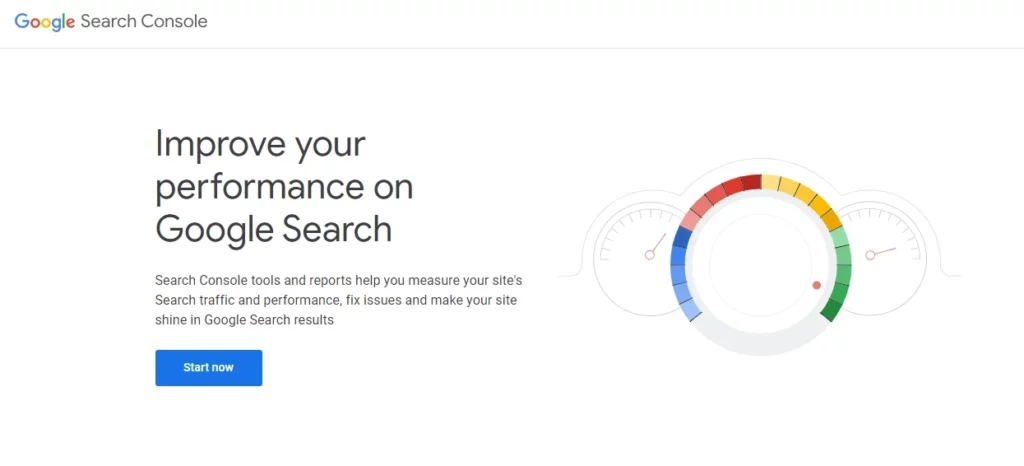
Google Search Console is a forecasting SEO tool that impacts the outcomes of your website. It’s like getting insider info straight from Google. It gives you the details of your site’s traffic from organic searches, your keywords’ performance, click-through rates, and even how well Google indexes your pages.
Also, GSC’s indexing status reports, mobile usability insights, and alerts about crawl issues or security problems help affect a website’s search performance. This complete suite of features makes GSC an essential component for any data-driven SEO forecasting approach.
3. Ahrefs
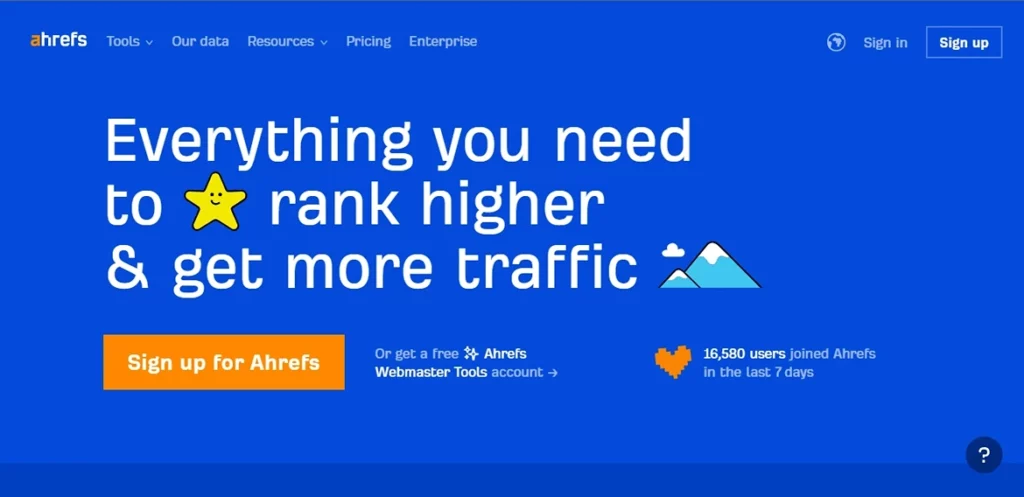
Ahrefs has advanced data analysis and forecasting capabilities. It’s a comprehensive tool that excels in competitive analysis, keyword research, and backlink tracking, offering insights for effective SEO forecasting. Its extensive database details a website’s keyword rankings, search traffic, and the quality and volume of backlinks.
The keyword explorer helps identify trending keywords and estimate their potential to attract traffic. This functionality is instrumental in forecasting opportunities for organic growth.
Conclusion
SEO forecasting isn’t just a tool in 2024 – it’s necessary if you want to stay competitive in digital marketing. Therefore, SEO forecasting should be part of your marketing strategy.
Maintaining visibility and success becomes increasingly important as the digital world becomes competitive. Adopting these predictability techniques puts you in a great position to capture your target audience’s attention and interest.
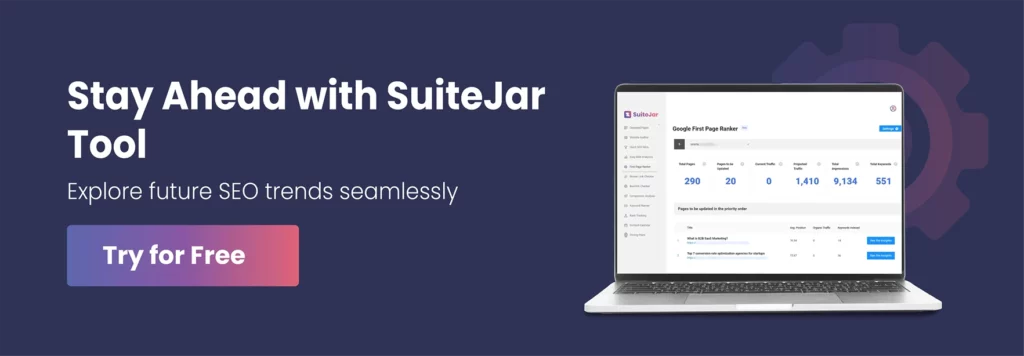
FAQs
1. How do you forecast for SEO?
To do SEO forecasting, you need to start by looking at your website’s past performance. You can track the traffic patterns, keyword rankings, and conversion rates. Then, use this data to forecast how future SEO efforts might impact your organic traffic and leads.
2. What is the best tool for SEO forecasting?
There are SEO forecasting tools in the market that you can use to forecast your website. They have different features that can give you insights into keyword trends, traffic forecasts, content optimization, and competitor performance that help you make future predictions.
3. How do you estimate traffic for SEO?
You can estimate SEO traffic by combining keyword search volumes, your site’s current rankings, and click-through rates. There are tools available for estimating the traffic to get a clearer picture by looking at factors to forecast possible visits.


